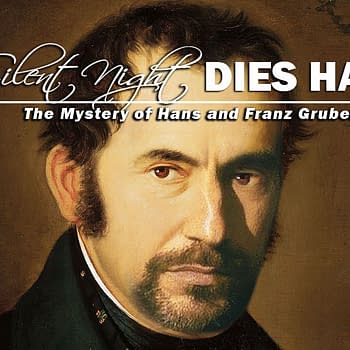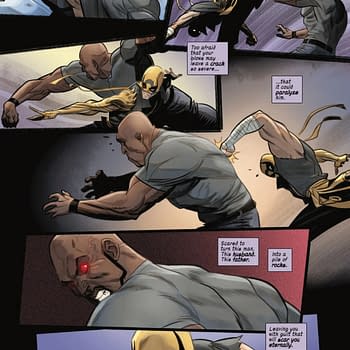Posted in: Comics, Comics History, Marvel Comics, Recent Updates, Spider-Man | Tagged: amazing spider-man, friendly neighborhood spider-man, stan lee, steve ditko
The Secret Origin Of Spider-Man's "Friendly Neighborhood"
Marvel Characters, Inc. has just registered a number of trademarks for goods and services relating to "Friendly Neighborhood Spider-Man". Bleeding Cool recently speculated that might mean that the familiar phrase would be used as a new comic book title. All well and good, but as BC's history nerd — or one of them, anyway — the thing that caught my eye in Rich's post was the Oxford English Dictionary first citation for the phrase: "…from 1955, with W Gaddis recommending 'Just tell Mummy to ask about Cuff next time she visits her friendly neighborhood druggist.'" As we'll see below, that's not quite right.
I've said more than once on BC that we're quietly standing on the precipice of what will become a revolution in the way we look at history in the coming years. We have easy search access to digital information from the past couple of centuries (and more), which would make historians from past eras weep with joy. This access does come with a price, though: the surprise (and sometimes shock) of finding that quite a lot of what you think you know about history — and what has been written in books, even authoritative ones — is wrong. I'm exaggerating, but not by as much as you'd think. I know you don't believe me yet, but bookmark this post and come back in five years.
"Friendly Neighborhood" is a trivial example of that, but let's go through it. Start with Google Ngrams, which graphs the usage of words and phrases over time in a large corpus of scanned books, documents, and magazines. Here's the result for "friendly neighborhood":
The big jump between about 1950 and 1973 is an obvious point of interest here, all the more so because Spider-Man got his start right in the middle of that run-up, in Amazing Fantasy #15 (Marvel, 1962). A quick read through the beginning of the Amazing Spider-Man series shows me that the first usage of "Friendly Neighborhood Spider-Man" appears to be in Amazing Spider-Man #17 (Marvel, 1963). Clearly, "Friendly Neighborhood" was in the air at that time, but where did it come from?
To try to figure that out, let's look at that smaller bump that occurred from 1925 to 1950. The rise in usage of the term goes hand in hand with the rise in regional and national advertising in the United States, as a simple way to put a human, local face on increasingly large chain stores, which were even then gaining a foothold in retail territory that was once the exclusive domain of the proverbial mom-and-pop corner store. One noteworthy early usage in this regard was the mid-1920s newspaper ads of Mutual Groceries, which would grow to include hundreds of stores across the country by the next decade:
"Friendly Neighborhood" would spread from there to be used as an advertising term by numerous types of chain businesses — grocery stores, banks, and more — but it took a true national advertising juggernaut to launch the term into the stratosphere, where Stan Lee and Steve Ditko (though in this case, "friendly neighborhood" has the ring of Stan Lee phraseology) plucked it out of the air in the early 1960s. That advertising juggernaut was Texaco, which had gas stations in every state in the country by the late 1940s, and was at the forefront of sponsoring broadcast entertainment such as Texaco Star Theater with Milton Berle.
Texaco was using the "Friendly Neighborhood Texaco Dealer" slogan in national campaigns throughout the late 1940s and early 1950s. It is this usage which causes the Google Ngrams curve to subsequently take a big jump up, as the term then goes viral and spills well beyond the advertising world and into common usage. "Friendly Neighborhood" had become so common by the 1960s that in the July, 1961 issue of Sponsor magazine, an advertising industry trade journal, slogans including "friendly neighborhood" were listed alongside the likes of "at leading department stores" in an article about advertising cliches.
Enter the Amazing Spider-Man the very next year, who had a marketing challenge not all that different from the one that the likes of Mutual Groceries and Texaco faced in the decades prior to that: he was an unknown, faceless, powerful force entering into territory which was normally the domain of trusted local residents. Indeed, J. Jonah Jameson's Daily Bugle often cast him as a threat to ordinary citizens. It's only natural that he use a slogan that by then had become ubiquitous for adding a human element to faceless, powerful forces coming into neighborhoods all across the country.



















